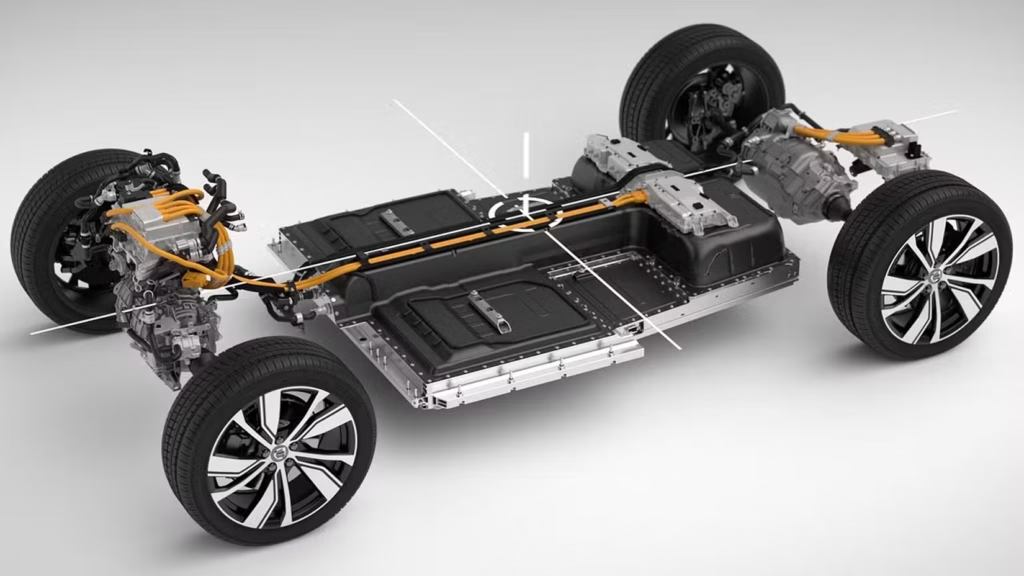Introduction: Why EV Batteries Matter More Than You Think
The global transition to electric vehicles has been described as a revolution in clean mobility, but much of the conversation around it often oversimplifies the most critical component of these cars: the EV battery. While automakers market electric vehicles as the ultimate solution to carbon emissions, the truth about EV batteries is far more complex. Behind the sleek designs, futuristic dashboards, and promises of zero tailpipe emissions lies a story of mineral extraction, environmental trade-offs, battery lifespan challenges, recycling dilemmas, and geopolitical competition. Understanding these realities is essential not just for potential EV buyers but also for policymakers, investors, and environmental advocates who want to make informed decisions about the future of mobility.
The truth is that EV batteries are not merely rechargeable power packs—they are the beating heart of electric mobility, storing immense amounts of energy while presenting engineering, environmental, and ethical challenges. The public narrative rarely touches on issues such as the mining of lithium, cobalt, and nickel, or the true carbon footprint of producing and recycling EV batteries. These hidden truths reveal that while EVs are a step in the right direction, they are not a flawless solution. Instead, they represent a compromise that must be carefully evaluated to create a truly sustainable transportation ecosystem.
The Materials That Power EV Batteries
At the core of every electric vehicle battery is a complex blend of minerals that enable energy storage. Most lithium-ion batteries, the dominant type used in EVs today, rely heavily on lithium, cobalt, nickel, manganese, and graphite. Each of these materials has unique properties that make large-scale battery storage possible, but sourcing them is far from straightforward. Mining these minerals requires massive amounts of energy and water, often in regions where both are scarce.
- Lithium: Primarily extracted from salt flats in South America, lithium mining consumes millions of liters of water, affecting local ecosystems and communities.
- Cobalt: Largely mined in the Democratic Republic of Congo, cobalt extraction is linked to human rights abuses, child labor, and unsafe working conditions.
- Nickel and manganese: Found in countries like Indonesia and South Africa, mining these metals produces toxic waste that can pollute rivers and soil.
- Graphite: Essential for battery anodes, graphite mining has raised concerns over air quality and community health in parts of China.
The irony is that while EVs are marketed as environmentally friendly, the very foundation of their power relies on industries that can have devastating environmental and human costs. This reality complicates the narrative that switching to electric vehicles is a straightforward path toward sustainability.
The Environmental Cost of Battery Production
One of the most overlooked aspects of EV battery production is its significant carbon footprint. Studies have shown that manufacturing a single EV battery can emit as much as 7–12 tons of CO₂, depending on the size of the battery and where it is produced. This is primarily because refining and processing the raw materials requires energy-intensive operations, often powered by coal.
- Producing a Tesla Model 3’s 75kWh battery emits approximately 4.5–7.5 tons of CO₂ before the car even hits the road.
- Manufacturing in regions like China, which relies heavily on coal, increases the carbon footprint compared to production in Europe, where renewable energy sources play a bigger role.
- Transportation of raw materials across continents adds another layer of hidden emissions.
For many buyers, this means that the environmental benefits of driving an EV may take several years of use before outweighing the emissions generated during production. While traditional vehicles emit CO₂ directly through fuel consumption, EVs front-load much of their emissions during the production phase. The reality is not that EVs are unsustainable, but rather that their sustainability depends heavily on battery production practices, energy grids, and end-of-life solutions.
Comparing EV Batteries vs. Traditional Engines
To better understand the trade-offs, it helps to compare EV batteries with internal combustion engines across several key metrics.
| Factor | EV Batteries | Internal Combustion Engines |
| Energy Source | Electricity (can be renewable) | Fossil fuels (oil, gas, diesel) |
| Carbon Emissions | High during production, low during use | Low production emissions, high during use |
| Maintenance Needs | Fewer moving parts, battery degradation issues | More moving parts, frequent servicing |
| Lifespan | 8–15 years, depending on battery health | 10–20 years, engine rebuilds possible |
| Environmental Impact | Mining and recycling challenges | Ongoing emissions and oil dependency |
This table highlights that while EVs can drastically reduce emissions during their lifetime, the cost of battery production and recycling still presents challenges. It demonstrates that EVs are not a perfect alternative but a transitional technology with both benefits and compromises.
The Myth of Unlimited Battery Lifespan
Battery marketing often emphasizes long driving ranges and warranties, but the truth about EV battery lifespan is more nuanced. Just like smartphone batteries, EV batteries degrade over time due to repeated charge and discharge cycles. On average, EV batteries lose about 2–3% capacity per year, which translates to shorter ranges and reduced efficiency over time.
- Most EVs today come with warranties of 8 years or 100,000 miles, but beyond that, battery replacement can cost between $10,000 and $20,000.
- Climate plays a role: hot regions accelerate battery degradation, while cold regions reduce efficiency temporarily but slow long-term wear.
- Charging habits affect lifespan: fast charging generates more heat, shortening the battery’s overall life compared to slow, home charging.
For the average driver, this means EV ownership might involve higher upfront costs with uncertain long-term outcomes. Unlike internal combustion vehicles, where engine repairs are common, EVs face the more daunting prospect of full battery replacement.
The Recycling Dilemma Few Address
Perhaps the most under-discussed issue is the recycling of EV batteries. Currently, less than 10% of lithium-ion batteries are recycled globally, and most recycling efforts focus on recovering high-value metals like cobalt and nickel rather than the entire battery structure.
- Many recycling facilities lack the technology to efficiently separate and reuse materials like lithium and manganese.
- Improper disposal can lead to toxic leaks, fires, and environmental hazards.
- Transporting and disassembling used EV batteries is costly and requires specialized handling due to fire risks.
As millions of EVs hit the roads in the next decade, the recycling challenge will grow exponentially. Without robust solutions, the industry risks replacing one environmental crisis (fossil fuel dependency) with another (battery waste and toxic pollution). Governments and private companies are racing to develop “closed-loop recycling” systems, but these solutions are still in their infancy.
The Geopolitics of EV Batteries
Another truth that seldom makes headlines is that EV batteries are geopolitical assets. Control over battery minerals, production facilities, and recycling technologies is shaping a new global power struggle.
| Country/Region | Strength in EV Battery Supply Chain |
| China | Dominates battery production and processing of lithium, cobalt, and graphite |
| Europe | Leading in policy-driven EV adoption and recycling innovations |
| United States | Investing heavily in domestic production through the Inflation Reduction Act |
| South America | Rich in lithium reserves but reliant on foreign investment |
| Africa | Major supplier of cobalt and manganese with governance challenges |
The heavy reliance on China, which controls more than 70% of global battery manufacturing, raises concerns for other countries trying to secure supply chains. This dynamic has led to trade tensions, resource nationalism, and new alliances aimed at reducing dependency. The EV revolution is not only an environmental movement but also a strategic economic competition.
Charging Infrastructure and Grid Strain
While much attention is paid to EV range, less is said about the strain EV batteries place on charging infrastructure and national power grids. Charging a single EV can consume as much electricity in one session as an average household uses in a day. As adoption grows, so will demand for stable, renewable electricity sources.
- Widespread fast charging can overload local grids if not properly managed.
- Renewable energy integration is essential; otherwise, EVs indirectly rely on fossil-fuel-powered electricity.
- Smart charging technology and vehicle-to-grid solutions are emerging but remain limited in scale.
Without parallel investment in power grids, renewable energy, and charging stations, EVs risk creating bottlenecks in urban centers and rural regions alike.
Health and Safety Concerns of EV Batteries
While automakers highlight the safety features of EVs, battery safety is a topic often brushed aside. Lithium-ion batteries are prone to thermal runaway, a chain reaction that can lead to fires or explosions if the battery is damaged or improperly managed. Unlike gasoline fires, which can often be extinguished quickly, EV battery fires burn hotter, longer, and are harder to control.
- Firefighters require specialized training and equipment to handle EV fires.
- Battery recalls due to safety risks, such as those involving Chevy Bolt and Hyundai Kona, highlight ongoing issues.
- Even during normal use, batteries emit small amounts of gases that require proper ventilation and management.
This doesn’t make EVs inherently unsafe, but it underscores the importance of consumer awareness, regulatory oversight, and constant technological improvements.
The Economic Realities of EV Ownership
One misconception is that EVs are cheaper to own in every scenario. While maintenance costs are lower due to fewer moving parts, the initial purchase price remains high, and battery replacement is a costly risk. Additionally, the resale value of EVs depends heavily on the perceived health of the battery, creating uncertainty in the used car market.
Government subsidies, tax credits, and fuel savings certainly offset some costs, but without these incentives, EVs remain less accessible to lower-income households. The long-term economic impact of EV adoption will depend on how quickly battery costs decline and whether recycling and second-life battery markets become viable.
Second-Life Uses for EV Batteries
One promising area that often gets overlooked is the potential second-life use of EV batteries. Even after a battery loses 20–30% of its capacity for driving, it can still function effectively for stationary energy storage. Companies are beginning to repurpose used EV batteries for solar energy storage, backup power systems, and grid balancing.
This approach not only extends the life of batteries but also reduces waste and creates additional value. However, scaling these programs requires standardized testing, reliable safety protocols, and strong business models that make second-life applications profitable.
The Future of EV Battery Innovation
While today’s challenges are real, it’s also important to highlight ongoing innovations in battery technology that may address many of these issues. Researchers are developing solid-state batteries, which promise greater energy density, faster charging, and lower fire risks. Other advances include sodium-ion batteries, which could reduce reliance on scarce minerals like lithium and cobalt.
Governments and automakers are investing billions into battery research, and breakthroughs in chemistry, recycling, and manufacturing could reshape the landscape within the next decade. The transition to more sustainable battery technologies is critical to making the EV revolution truly green.
Conclusion: Balancing Promise and Reality
The truth about EV batteries is not that they are inherently bad, but that their story is far more complex than marketing suggests. While they offer a path toward reducing tailpipe emissions and lowering dependence on fossil fuels, they also come with environmental, ethical, and economic trade-offs that society must confront. From mining and manufacturing to recycling and geopolitical tensions, every stage of the EV battery lifecycle has consequences that must be addressed transparently.
For consumers, policymakers, and industry leaders, the path forward involves balancing the benefits of cleaner transportation with the responsibility of building sustainable supply chains, ethical mining practices, and effective recycling systems. The future of EV batteries will depend not just on technological breakthroughs but also on how well we manage the hidden truths that nobody talks about today.
Frequently Asked Questions (FAQs)
1. How long do EV batteries really last?
Most EV batteries last 8–15 years, depending on climate, usage, and charging habits.
2. Are EV batteries worse for the environment than gasoline engines?
They have higher production emissions but lower lifetime emissions compared to traditional engines.
3. How much does it cost to replace an EV battery?
Replacement costs range between $10,000 and $20,000 depending on the model.
4. Can EV batteries be recycled?
Yes, but recycling technology is still developing, and less than 10% are recycled effectively today.
5. Do EV batteries catch fire easily?
They are safe in most conditions, but thermal runaway incidents can cause difficult-to-control fires.
6. What are second-life uses for EV batteries?
Used batteries can be repurposed for home energy storage and grid support.
7. Why is cobalt controversial in EV batteries?
Much of it is mined under unsafe conditions with reports of child labor in the Democratic Republic of Congo.
8. Which countries dominate EV battery production?
China controls over 70% of global production and supply chains.
9. Are solid-state batteries better than lithium-ion?
They promise higher efficiency, faster charging, and improved safety but are not yet widely available.
10. Do EVs save money in the long run?
They can save on fuel and maintenance, but high upfront costs and battery replacement risks must be considered.


